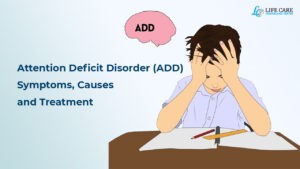
have trouble waiting in long lines, traffic, or for appointments.need to pace the room or move around a lot, or feel as if you can’t stop moving.a habit of interrupting others, intruding on conversations and activities, or using others’ belongings without permissionĪgain, these symptoms will show up in multiple areas of life.a habit of finishing others’ sentences or giving an answer before someone finishes asking a question.trouble playing quietly or participating in relaxing activities.persistent feelings of restlessness, which might show up as a tendency to run or climb in inappropriate situations.


trouble staying seated in school, work, or other situations.frequent fidgeting, squirming, or tapping hands and feet.difficulty waiting patiently or taking turns.difficulty sitting quietly, remaining still, or staying in one place.This type of ADHD, also called the hyperactive-impulsive type, involves symptoms of hyperactivity and impulsivity.
#Add symptoms series#
have a hard time paying attention, even to things that interest you, like the latest book in a favorite series or a friend’s description of a recent trip.find it difficult to complete tasks on time, and procrastinate on schoolwork, chores, or even projects you enjoy.have trouble keeping track of special dates like birthdays and anniversaries along with due dates for work assignments and bill payments.With this type of ADHD, you (or your child) might: These signs might show up at school, work, home, or in personal relationships. a habit of losing vital things needed for daily routines and activities.a tendency to put off or avoid tasks that require long periods of mental effort, such as homework or work projects.difficulty staying organized or managing time.a tendency to lose focus or get sidetracked easily.trouble following instructions and completing tasks as directed.difficulty concentrating on tasks or activities.trouble paying attention to details or listening when other people speak.Symptoms of the inattentive type include: Now, they’d most likely diagnose ADHD with a predominantly inattentive presentation.

#Add symptoms professional#
Originally, ADD described the inattentive type of ADHD.Ī doctor or mental health professional might have diagnosed ADD when someone had persistent symptoms of inattention and distractibility, but few signs of hyperactivity or impulsivity.

Since these estimates come from reported symptoms and diagnoses, some believe the real prevalence of ADHD could be higher.Įxperts have identified three types of ADHD, based on the main symptoms involved: According to a 2021 review, nearly 2.6 percent of adults globally have persistent ADHD from childhood, while about 6.7 percent of adults have symptoms of adult ADHD. The Centers for Disease Control and Prevention (CDC) says that about 9.4 percent of children and adolescents (just over 6 million) in the United States have ADHD.Īdults can have ADHD, too. Today, ADHD is one of the more common childhood mental health conditions. When the American Psychiatric Association released a revised edition in 1987, they combined these two subtypes into one condition: ADHD.
#Add symptoms manual#
The term ADD first appeared in the third edition of the “Diagnostic and Statistical Manual of Mental Disorders (DSM-3),” a reference manual that helps mental health professionals diagnose mental health conditions.Įxperts separated the condition into two subtypes: What are the differences between ADD and ADHD?Īttention deficit disorder (ADD) is an outdated term for what experts now call attention deficit hyperactivity disorder (ADHD).


 0 kommentar(er)
0 kommentar(er)
